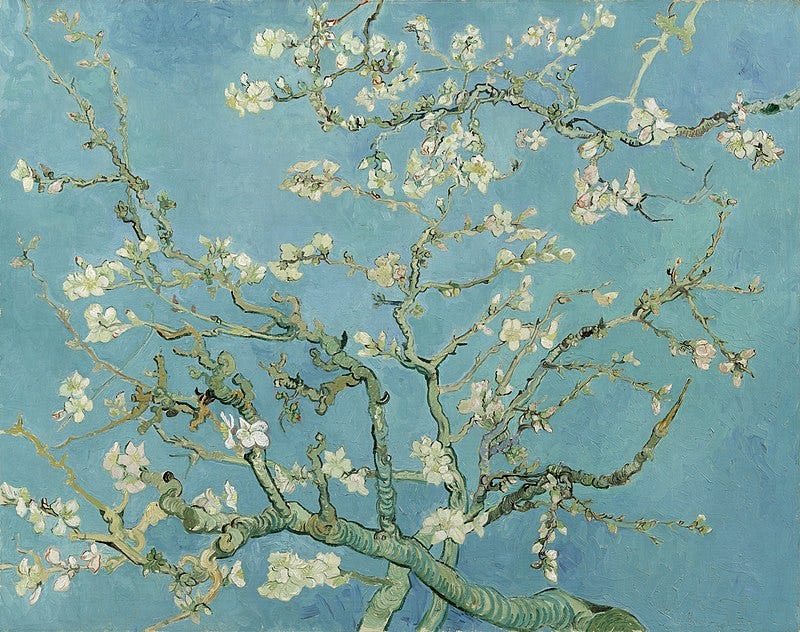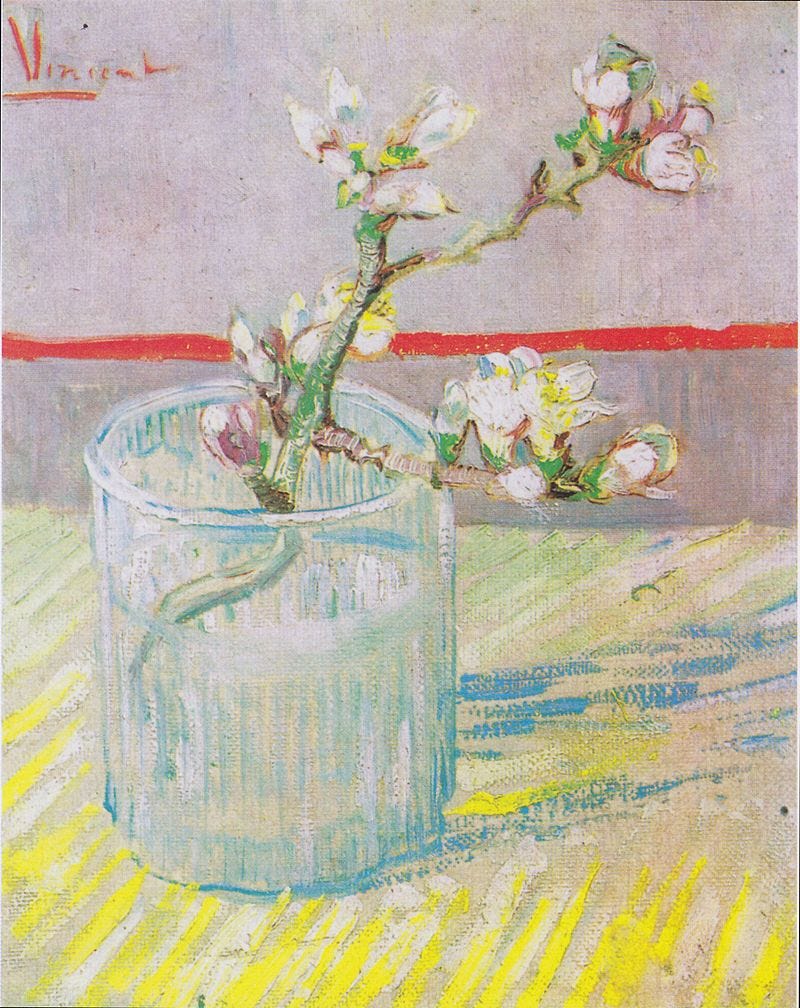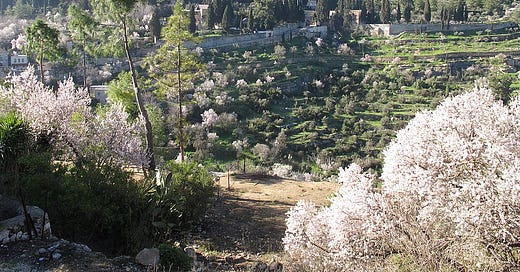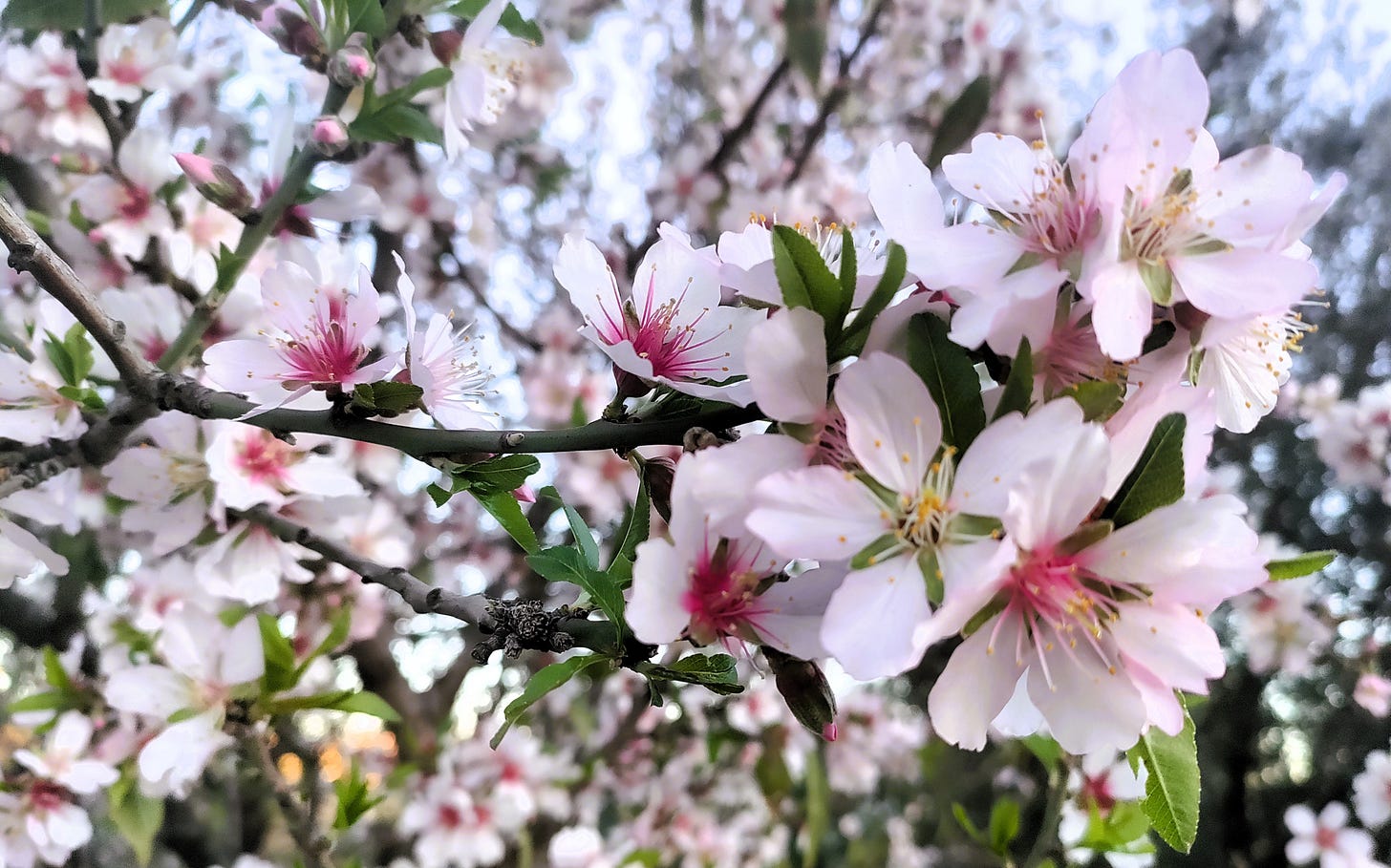Usually, I am not someone who “loses the forest for the trees.” I like big ideas, and I try to approach them without the distraction of minor details. But right now, the forest is dense and disorienting. Political forces are swirling, Israeli society is splintering, and the outcome of this war is wholly unpredictable.
So I’m focusing my attention on trees. Not just any trees. The gorgeous, blossoming almond trees lining the streets and dotting the hills of Jerusalem.
Whether walking to the bus stop or hiking a trail, I’m taking them in. From a distance, their pink and white crowns blur like cotton candy. Up close, their delicate flowers shine.
I am certainly not the first to recognize that proximity brings clarity, especially when it comes to almond trees. In 1888 and 1890, Vincent Van Gogh painted Almond Blossoms, a group of oil paintings that zoom in on branches and blooms, rather than set trees within larger landscapes. In the most famous of the paintings, Van Gogh has us look up into an almond tree he has graphically pruned and set against a contrasting, turquoise sky to highlight its details.

In another, he does more with less. On a canvas barely ten inches by eight inches, he presents a single almond branch in a simple glass. It is an unassuming still life, but one whose vibrant colors and brush strokes convey what the early-blossoming almond tree has come to symbolize: hope in new beginnings.

As protracted hostage negotiations, impending military operations, and mass evacuations overwhelm the big picture, I, too, am restricting my frame to finite branches, flowers, and petals. Sometimes, a narrow gaze is necessary. Often, it reveals an unexpected, essential vitality.





